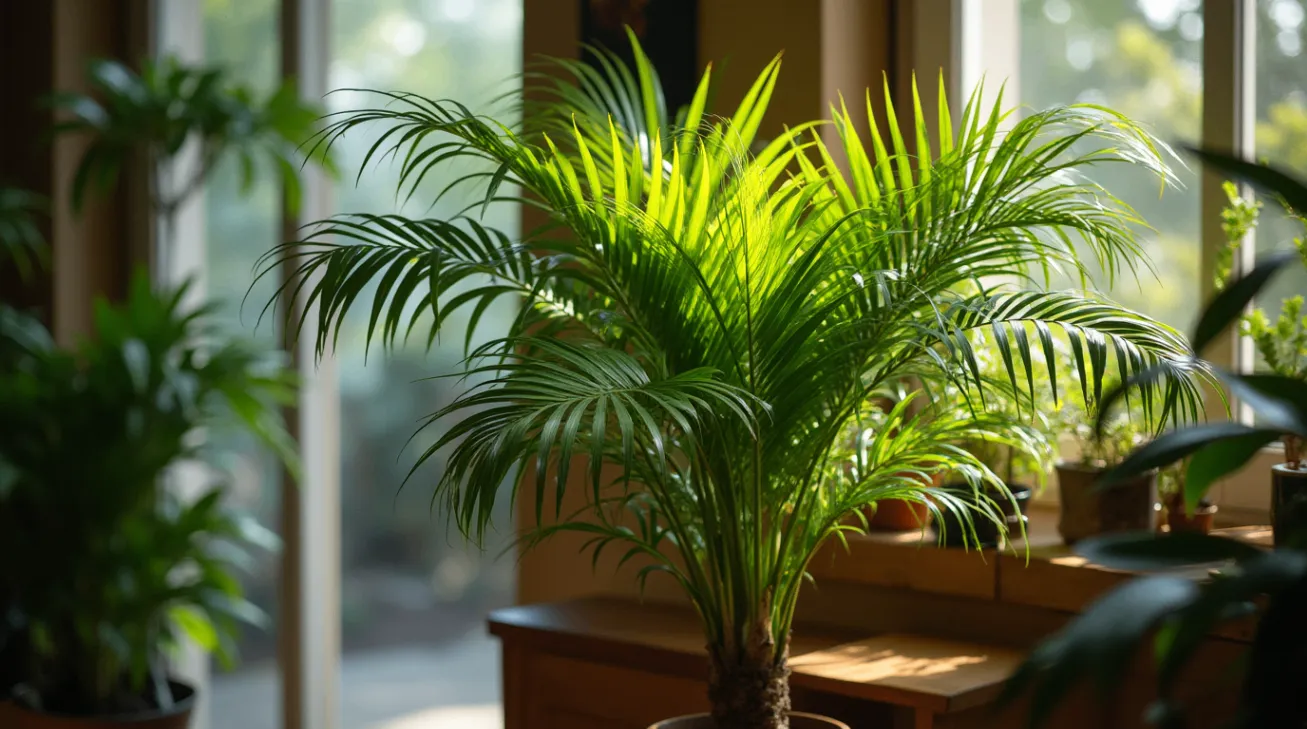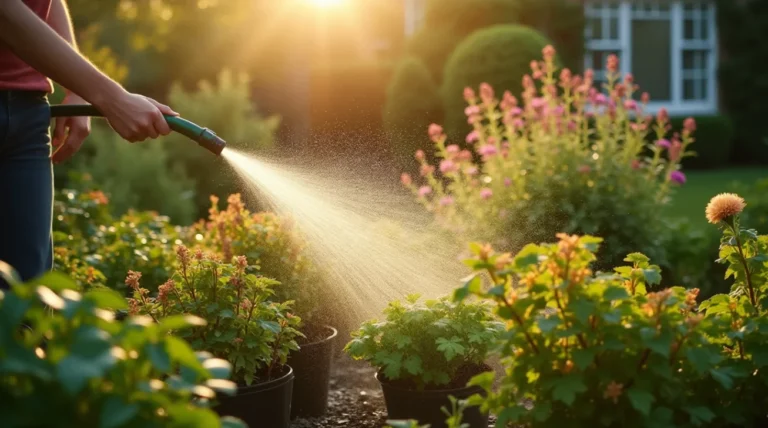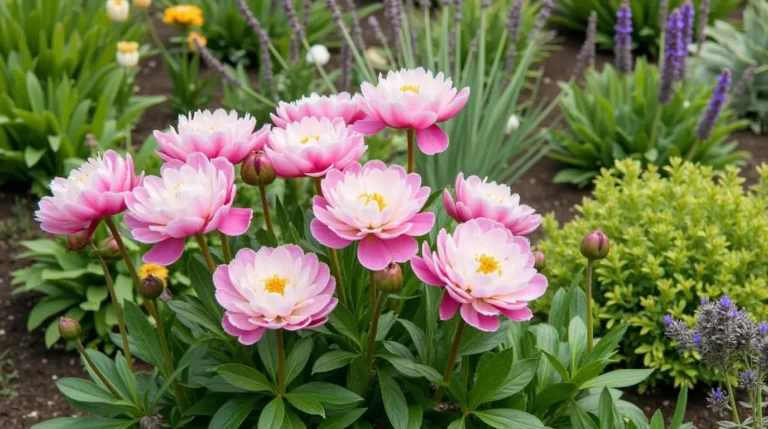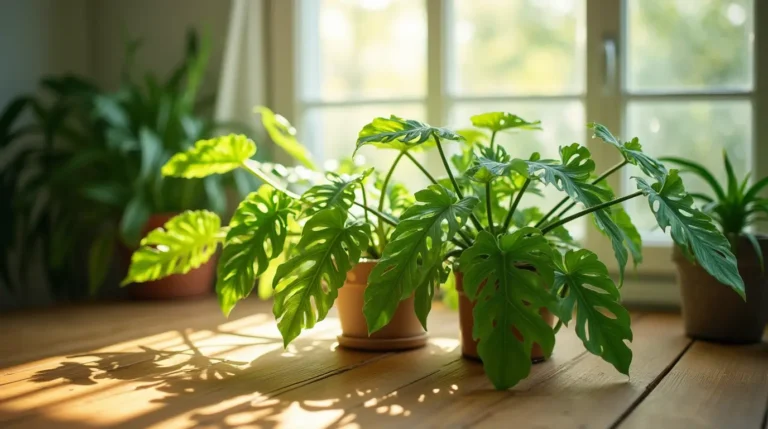Areca Palm: Why It’s the Best Indoor Air-Purifying Plant
The areca palm is a favorite for indoor spaces because of its beauty and air-purifying skills. It’s a top pick for improving air quality and making homes and offices healthier. It’s a smart choice for those wanting a clean and beautiful indoor space.
Adding an areca palm to your home or office brings cleaner air and beauty. This amazing plant makes your space healthier and more attractive.
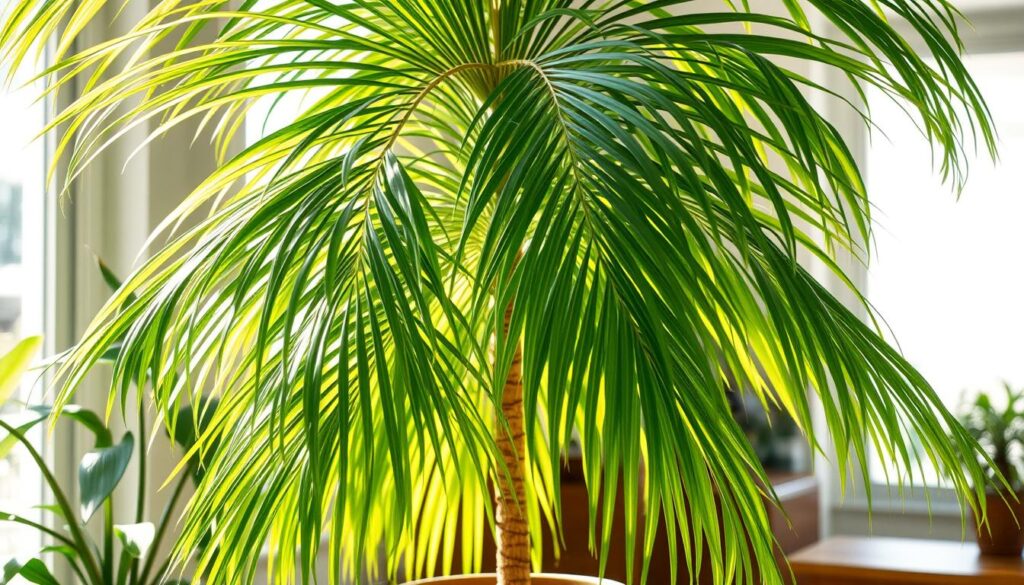
Introduction to the Areca Palm
The areca palm is famous for cleaning the air and making homes healthier. It’s a stunning plant that also purifies the air. It’s perfect for any indoor spot, adding beauty and health.
Key Takeaways
- The areca palm is a popular indoor air-purifying plant known for its elegant appearance and efficient air-purifying capabilities.
- It’s an ideal choice for homeowners and offices looking to create a healthier environment with a reliable indoor air-purifying plant.
- The areca palm can help purify the air and create a more aesthetically pleasing environment.
- It’s considered one of the best indoor air-purifying plants available due to its air-purifying capabilities and attractive appearance.
- Incorporating an areca palm into your space can lead to a healthier indoor environment and a more beautiful space with a great indoor air-purifying plant.
- The areca palm is a great option for those looking to improve indoor air quality with a proven indoor air-purifying plant.
Understanding the Areca Palm: A Natural Air Purifier
The areca palm is a favorite indoor plant for its air-purifying skills. It comes from tropical areas and loves bright, indirect light and high humidity. This makes it perfect for cleaning the air in homes.
It’s native to tropical places and has adapted to certain conditions. As a natural air purifier, it can remove harmful toxins from the air. Knowing how it grows helps people create the best conditions for it indoors, enhancing its air-purifying effects.
Origin and Natural Habitat
The areca palm comes from tropical areas where it’s common. It thrives in humid, warm environments with bright, indirect light. To mimic these conditions indoors, place it in a spot with similar light and keep humidity consistent.
Physical Characteristics
The areca palm is a tall, evergreen plant with feathery leaves that can reach 6 feet. Its looks and air-purifying abilities make it a great addition to any room.

Natural Growth Patterns
Knowing how the areca palm grows naturally is key to caring for it indoors. It needs consistent humidity, bright, indirect light, and regular watering. By mimicking its natural habitat, you can boost its air-purifying powers and enjoy its benefits.
| Characteristics | Description |
|---|---|
| Origin | Tropical regions |
| Natural Habitat | High humidity, warm temperatures, bright, indirect light |
| Physical Characteristics | Slender, evergreen plant with feathery leaves |
| Natural Growth Patterns | Requires consistent humidity, bright, indirect light, and regular watering |
The Science Behind Areca Palm’s Air-Purifying Abilities
The areca palm is famous for its air-purifying abilities. It’s a top pick for better indoor air quality. Knowing how it cleans the air shows its value in homes or offices.
This plant removes harmful toxins and pollutants. It makes indoor spaces healthier.
The areca palm absorbs gases and particles. It also releases oxygen and moisture. This balance improves indoor air quality, boosting health and mood.

To get the most out of the areca palm’s air-purifying abilities, it needs the right care. It needs enough light, water, and nutrients. With proper care, it stays healthy and keeps the air clean.
Ideal Growing Conditions for Your Areca Palm
To make your Areca Palm happy, you need to give it the right growing conditions. This means knowing what it needs and creating a good environment. Proper areca palm care is all about paying attention to details like light, temperature, and humidity.
Areca Palms are pretty flexible when it comes to growing conditions. But they love bright, indirect light. Direct sunlight can burn their leaves, so finding the right balance is key. They also do best in warm temperatures between 65-75°F (18-24°C). Make sure your plant isn’t too close to cold drafts or air conditioning vents.
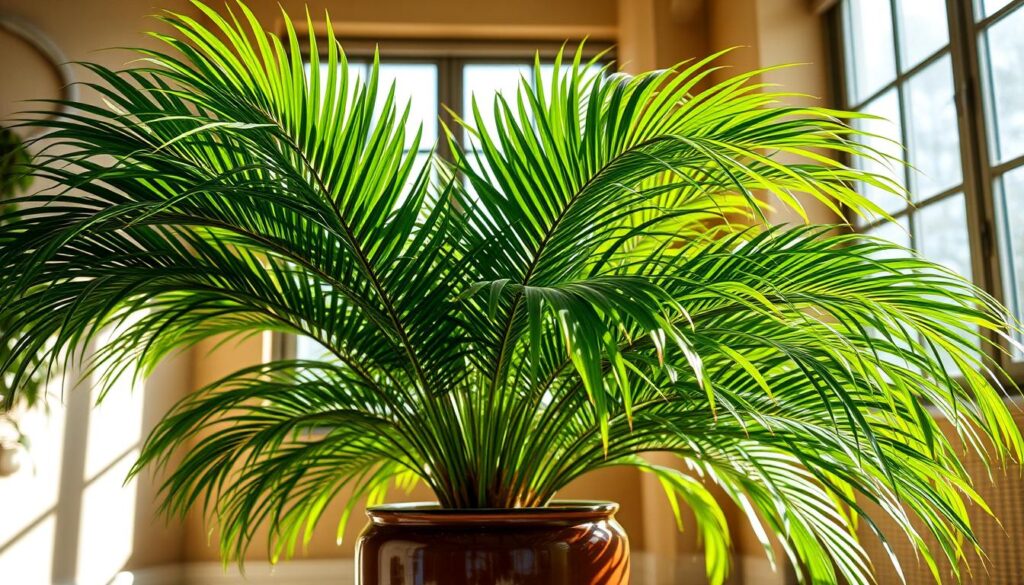
For indoor plant care, Areca Palms also need the right humidity. They like it pretty humid, between 40-60%. To keep the air moist, you can put the plant on a tray with water and pebbles or use a humidifier.
Light Requirements
- Bright, indirect light
- Avoid direct sunlight
- East- or west-facing windows are ideal
Temperature Preferences
- Warm temperatures between 65-75°F (18-24°C)
- Avoid drafty windows or air conditioning vents
Humidity Needs
- Relatively high humidity (40-60%)
- Use a humidifier or place the plant on a tray with water and pebbles
By following these tips, you’ll become a pro at areca palm care. And you’ll enjoy the many perks of having this lovely indoor plant care gem.
Selecting the Perfect Spot for Your Indoor Areca Palm
Choosing the right spot for your areca palm is key to its health and beauty. As an air-purifying plant, it’s a favorite for homes and offices. Where you place it can affect how well it cleans the air.
Here are some tips for picking the best spot for your Areca Palm:
- Light exposure: Areca Palms love bright, indirect light. They do well in rooms with big windows or skylights.
- Proximity to heating or cooling vents: Keep your Areca Palm away from vents. This prevents temperature changes and dry soil.
- Aesthetic appeal: Pick a spot that highlights your Areca Palm’s beauty. It should also match your indoor decor.
By thinking about these points, you can find the ideal spot for your Areca Palm. Enjoy its beauty and air-purifying benefits.
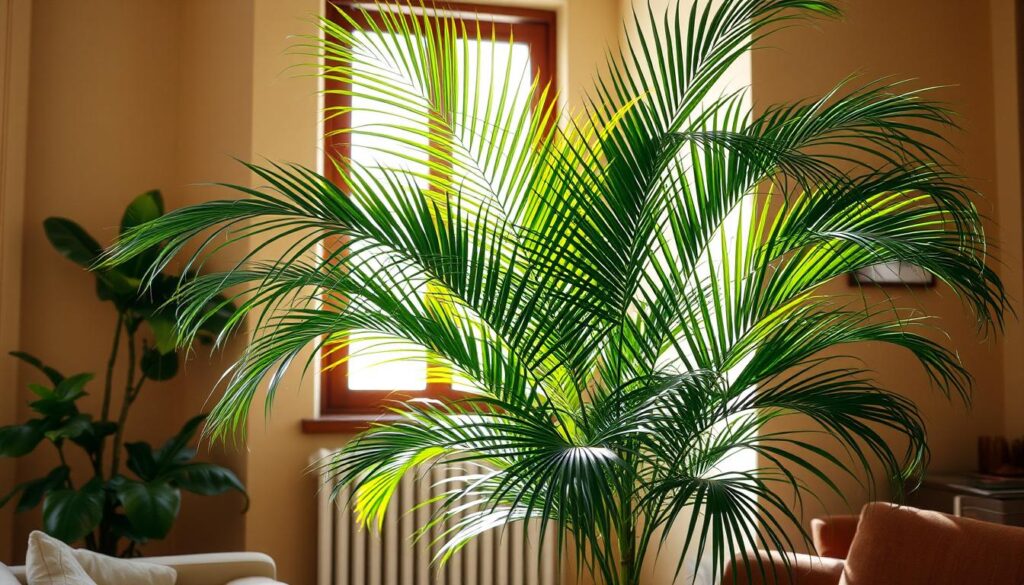
Essential Soil Requirements and Potting Tips
Choosing the right soil for your areca palm is key to its health. A mix that drains well is crucial to avoid waterlogged soil. This can cause root rot. Mix peat moss, perlite, and vermiculite in equal parts for the best results.
This blend ensures your plant’s roots get the air and water they need. Proper drainage is essential for indoor plants. It prevents water from pooling and causing harm.
To ensure good drainage, pick a pot with holes in the bottom. Use a potting mix that’s made to let water drain. Here are some tips for potting your areca palm:
- Choose a pot that is slightly larger than the plant’s root ball
- Use a well-draining potting mix
- Water carefully, avoiding overwatering
By following these tips and using the right soil, your areca palm will thrive. Keep an eye on your plant and adjust its care as needed.

| Soil Component | Proportion |
|---|---|
| Peat Moss | 30% |
| Perlite | 30% |
| Vermiculite | 40% |
Watering Schedule and Techniques
Proper areca palm watering is key for its health and air-purifying role. Too much water can cause root rot, while too little can turn leaves yellow. A good watering schedule ensures the plant gets just the right moisture.
When caring for indoor plants, knowing their watering needs is vital. The watering schedule depends on the plant’s size, soil, and environment. Here are some tips for a good watering schedule for your areca palm:
- Water your areca palm when the top 1-2 inches of soil feel dry.
- Use room-temperature water to avoid shocking the roots.
- Avoid getting water on the leaves or crown to prevent rot and other problems.
By following these tips and setting up a good watering schedule, you can keep your areca palm healthy. This ensures it grows well and purifies the air effectively.
| Watering Frequency | Soil Moisture | Plant Response |
|---|---|---|
| Daily | Consistently moist | May lead to root rot |
| Weekly | Allowing soil to dry slightly | Promotes healthy growth |
| Monthly | Soil is consistently dry | May cause leaves to turn yellow |
Fertilization and Nutrient Requirements
Proper fertilization is key for your areca palm’s health and air-purifying abilities. Knowing what nutrients your palm needs is crucial. Indoor plant care means giving the right nutrients for growth and health.
There are many fertilizers for areca palms. You can choose balanced ones or specialized ones for specific needs. Feed your palm with fertilizers during the growing seasons, spring and summer.
Types of Fertilizers
- Balanced fertilizers (20-20-20)
- Specialized fertilizers (high phosphorus for root development)
- Organic fertilizers (compost, manure)
Signs of Nutrient Deficiency
Watch for signs of nutrient lack in your palm. Look for yellow leaves, brown tips, and slow growth. Spotting these signs helps you adjust your fertilizing to keep your palm healthy.
With a good fertilization plan and knowledge of your palm’s needs, you can help it grow well. Choose the right fertilizer and follow the schedule. This ensures your palm gets the nutrients it needs for growth and air-purifying.
Pruning and Maintenance Guidelines
Regular areca palm pruning is key to keep the plant looking good and air-purifying. You can cut off dead or dying leaves with clean scissors or pruning shears.
For maintenance guidelines, check the plant often for pests or diseases. Look for unusual spots or color changes on leaves and stems. Also, make sure to water and feed the plant right.
Here are some important tips for areca palm pruning and care:
- Prune in spring and summer when the plant is growing.
- Take off dead or dying leaves to stop disease spread.
- Water well, but don’t overdo it.
By sticking to these maintenance guidelines and caring for your Areca Palm well, it will stay healthy. This ensures it keeps purifying the air and makes your home look better.
Common Pests and Disease Management
The Areca Palm can face pests and diseases that harm its health and air-purifying role. It’s key to manage diseases well to keep the indoor air clean. Watch out for areca palm pests like spider mites, mealybugs, and scale insects early.
Good indoor plant care is vital. This includes watering, fertilizing, and pruning right. Too much water can cause root rot, while too little can attract pests. Carefully balancing these practices helps the Areca Palm stay healthy.
Identifying Common Pests
- Spider mites: tiny, spider-like creatures that feed on plant sap
- Mealybugs: small, white, cottony insects that secrete a sticky substance
- Scale insects: armored insects that feed on plant sap
Disease Prevention
To stop diseases, follow good indoor plant care habits. Make sure the plant gets enough light, water, and nutrients. Also, check the plant often for pests or diseases.
Treatment Methods
If pests or diseases show up, there are ways to treat them. Use insecticidal soap or neem oil for pests, and fungicides for fungal diseases. Pick the best treatment based on the pest or disease and how bad it is.
Propagation Methods for Areca Palm
Areca palm propagation is a wonderful way to share plants or grow your indoor garden. It boosts your space’s air quality. You can use indoor plant propagation techniques like seed germination and division to create new plants. These methods help you successfully grow your Areca Palm and enjoy its air-purifying benefits.
To begin, choose a propagation method. Here are your options:
- Seed germination: This method involves planting seeds in a pot or tray and giving them the right conditions to grow.
- Division: This method splits the roots of a mature plant to create new ones.
Both methods need proper plant care. This includes the right amount of light, water, and nutrients. With the right techniques and conditions, you can successfully grow your Areca Palm. You’ll enjoy the benefits of areca palm propagation and indoor plant propagation.
Here’s a simple table to help you start with Areca palm propagation:
| Method | Materials Needed | Success Rate |
|---|---|---|
| Seed Germination | Seeds, pot, soil, water | 50-70% |
| Division | Mature plant, pot, soil, water | 70-90% |
By following these steps and giving the right plant care, you can successfully grow your Areca Palm. You’ll enjoy the benefits of areca palm propagation and indoor plant propagation. Always research and understand your plant’s specific needs for the best results.
Maximizing Air Purification Benefits
To get the most out of your Areca Palm’s air purification, consider a few key factors. Optimal placement is crucial. It directly affects the plant’s ability to purify the air. By placing your Areca Palm in a spot with good air circulation, it can remove pollutants and toxins from the air. This improves indoor air quality.
The number of plants needed can vary based on the space size. A general rule is to have one plant per 100 square feet. However, adjust this based on air quality concerns and desired purification levels.
Optimal Plant Placement
Some tips for optimal placement include:
- Placing the plant near a window to maximize natural light
- Avoiding areas with direct sunlight, which can cause leaf scorch
- Keeping the plant at least 3-4 feet away from any walls or obstructions
Maintaining Peak Performance
To keep your Areca Palm performing at its best, water it regularly and fertilize it during the growing season. With proper care and optimal placement, your Areca Palm can improve indoor air quality. It helps create a healthier living space through effective areca palm air purification.
Seasonal Care Adjustments
As seasons change, it’s key to adjust your areca palm care. This ensures the plant stays healthy and keeps the air clean. Indoor plants need attention to light, temperature, and humidity changes at home.
In spring and summer, your areca palm grows fast. It needs more water and fertilizer. But, in fall and winter, it grows slower. It needs less water and fertilizer. Seasonal adjustments help avoid over-watering and under-watering. This prevents root rot and other issues.
- Lighting: Move the plant to get the right light, considering sun patterns change with seasons.
- Temperature: Keep it away from drafts and extreme temperatures. This prevents stress and keeps air purification.
- Humidity: Use a humidifier in dry winter months. This keeps leaves moist and promotes growth.
By following these tips and making seasonal adjustments, your areca palm will stay happy and healthy. It will keep your air clean and look beautiful all year.
| Season | Watering | Fertilization |
|---|---|---|
| Spring/Summer | More frequent | Regular |
| Fall/Winter | Less frequent | Reduced |
Troubleshooting Common Growth Issues
Dealing with growth problems in your Areca palm is key. Yellow leaves often mean you’re watering too much or too little. Check the soil and adjust your watering. Brown tips can signal dry air or too much fertilizer. Keep the air humid and fertilize lightly.
Watching your Areca palm closely is vital for its health. Common problems include:
- Yellowing leaves: adjust watering schedule and soil moisture
- Brown tips: maintain humid environment and fertilize sparingly
- Growth problems: ensure adequate light, temperature, and nutrients
Knowing the reasons behind these issues helps fix them. Regular checks and care can keep your Areca palm thriving. This ensures it continues to clean the air and enhance your space.
Stay alert and fix problems quickly to avoid bigger issues. With the right care, your Areca palm will grow well and improve your indoor space.
| Growth Issue | Cause | Remedy |
|---|---|---|
| Yellowing leaves | Overwatering or underwatering | Adjust watering schedule and soil moisture |
| Brown tips | Dry air or excessive fertilization | Maintain humid environment and fertilize sparingly |
| Growth problems | Inadequate light, temperature, or nutrients | Ensure adequate light, temperature, and nutrients |
Combining Areca Palm with Other Air-Purifying Plants
Creating an indoor garden with different air-purifying plants can make a room look better and breathe cleaner. Mixing areca palm with other plants is a smart way to do this. By picking plants that clean the air well and need similar things to grow, you can make a lively and healthy indoor garden.
Some great air-purifying plants to pair with areca palm are spider plants, peace lilies, and dracaena. These plants help clean the air by removing bad stuff, making it healthier. When you mix areca palm with other plants, think about what they need to grow well. This includes light, water, and temperature.
- Choose plants with similar growth requirements
- Consider the size and shape of each plant
- Select plants with complementary air-purifying capabilities
By following these tips and picking the right areca palm mixes, you can make a stunning and useful indoor garden. It will improve the air and look of your space.
Long-Term Care and Growth Expectations
Proper care is key for an areca palm to thrive. It’s important to manage its size, as it can grow tall. Regular pruning helps keep it at a good height and promotes healthy growth.
Knowing how long an areca palm lives is crucial. They can live for 10-15 years, making them great indoor companions. To support their growth, repot them every 2-3 years. This gives them fresh soil and a bigger pot if needed.
- Providing sufficient light and water
- Maintaining a consistent temperature between 65-75°F
- Fertilizing regularly during the growing season
By following these tips, you can enjoy your areca palm for many years. It will stay healthy and beautiful in your home.
| Aspect of Care | Recommendation |
|---|---|
| Repotting | Every 2-3 years |
| Pruning | Regularly to maintain size |
| Fertilization | During growing season |
Conclusion: Creating a Healthier Indoor Environment with Areca Palm
As we wrap up our exploration of the Areca palm, it’s evident that this plant is a treasure for a healthier home. By following the care tips in this guide, you can make your space fresher and more vibrant. This will turn your home or office into a refreshing oasis.
Adding the Areca palm to your space does more than just clean the air. It also brings natural beauty that can boost your mood and health. This plant is great for removing harmful toxins and adding oxygen, making it essential for a better indoor environment.
So, let’s bring the Areca palm into our lives and enjoy its many benefits. By doing so, we’re making our indoor spaces healthier and more sustainable. This move supports both our environment and our well-being, leading to a greener and healthier lifestyle.
FAQ
What are the key benefits of the Areca Palm as an indoor air-purifying plant?
The Areca Palm is great for cleaning the air indoors. It removes harmful toxins like formaldehyde and benzene. This makes the air healthier, improving your living or work space.
What are the Areca Palm’s natural origins and physical characteristics?
The Areca Palm comes from tropical areas, especially Southeast Asia. It has long, feathery leaves and can grow up to 6-8 feet tall indoors. It likes bright, indirect light and high humidity.
What are the ideal growing conditions for an Areca Palm indoors?
Areca Palms need bright, indirect light and a temperature of 65-85°F. They also like high humidity, around 40-50%. You can use misting or a pebble tray to keep the humidity up.
How should I water and fertilize my Areca Palm?
Water your Areca Palm regularly, letting the soil dry a bit between waterings. Don’t overwater, as it can cause root rot. Fertilize every 2-3 months with a balanced fertilizer during the growing season.
How do I prune and maintain my Areca Palm?
Prune your Areca Palm often to remove dead leaves. Use sharp scissors or pruners to cut off brown or yellow fronds. Also, clean the leaves with a damp cloth to boost air purification.
How can I propagate my Areca Palm?
You can propagate your Areca Palm by seed or division. For seeds, sow them in well-draining soil and keep moist until they grow. For division, separate the offsets and repot them.
What are some common pests and diseases that can affect Areca Palms?
Areca Palms can get pests like spider mites and diseases like leaf spot. Keep the plant healthy and address problems quickly to prevent these issues.
How can I maximize the air-purifying benefits of my Areca Palm?
Place your Areca Palm in a spot with good air flow, away from vents. Make sure you have enough plants for your space. Keep the plant healthy through proper care and grooming.
How do I adjust the care of my Areca Palm for different seasons?
Adjust your care for your Areca Palm with the seasons. In winter, water and fertilize less and add humidity. In summer, water more and ensure it gets enough light and air.

